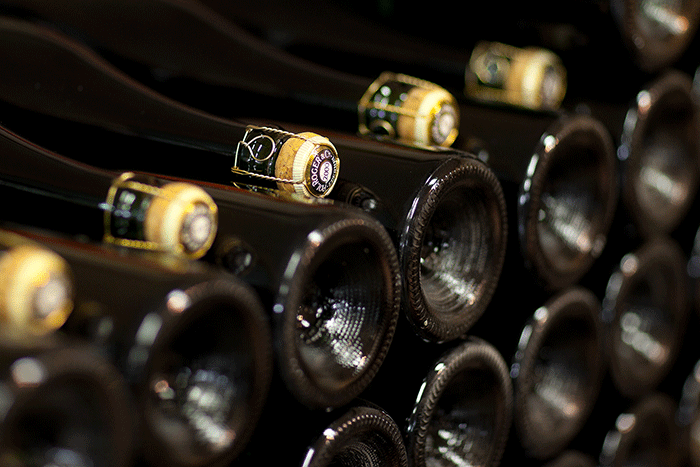Small writ large: artisan Champagne
Author: Simon Field MW
Buying trips to Champagne used to involve jackets, ties, polished small talk and exquisite sales pitches (from the Champenois, that is to say, rather than our buying team). It was all rather magnificent and all rather like Bordeaux. Dinner at, say, Moet’s Orangerie on the Avenue de Champagne or a stay at the Château de Saran does not feature in a line-up of life’s less pleasing experiences. It is, of course, not “good bye to all that”, these days, but our visits are rather more measured, rather more diverse and ultimately rather more rewarding.
Our Champagne expert, Edwin Dublin, has already eloquently rehearsed the minutiae of our latest visit, a trip which has formed the basis of our current offer of artisan Champagnes. Instead, I shall step back and survey the gently undulating lie of the Champenois land and take the region’s pulse. Some say that Champagne sales provide a bell-weather in advance of economic recovery; if that is the case, at Berry Bros. & Rudd at least, all is looking positive. We are still, in terms of sheer volume of sales, dependent on the releases of the big names, be it Dom Pérignon or Pol Roger Sir Winston Churchill, but in terms of the overall range, there is now much more diversity and far more wines which do not fall under the ownership of the larger commercial enterprises which we were once allowed to call Grandes Marques.
When I went to Champagne nearly a decade ago in search of the hitherto somewhat elusive Growers Champagnes and came back with a dozen new producers, many thought that the exercise may prove virtuous but ultimately of limited value. It’s a great compliment to the style and quality of these domaines that they are all still on our list and that they are all selling well. We have been especially successful with R and L Legras from Chouilly, which, in spite of obvious pronunciation difficulties, is proving a great success in our Asian subsidiaries.
In addition, the range of the peerless Champagnes made in the southern region of the Aube by the maverick Cédric Bouchard, has built an impressive following, proving once and for all that there is real quality to be found in these somewhat undervalued vineyards. Finally I am delighted that our sister company Fields, Morris & Verdin has taken on the full UK representation of the wines of Pierre Peters in Le Mesnil sur Oger. When the redoubtable Rodolphe Peters visited us last year, the vertical tasting of his top wine (Les Chétillons) proved to be one of the finest-ever tastings in our St James’s Cellars. And not for want of competition.
Nearly 10 years on, and our list of Growers has virtually doubled with three especially worthy of mention, given that they are the latest trio to join the list. The ebullient Eric Rodez makes powerful Pinot-dominated wines in Ambonnay; his well named Cuvée des Grandes Vintages reminds me of Krug Grande Cuvée, such is its complexity and depth of flavour. Then we have Cyril Janisson, a youthful and engaging winemaker, who demonstrates with great eloquence that the Vallée de la Marne should not be underestimated in terms of terroir. Try his Cuvée Non Dosé if you wish to taste a very fine Champagne that has had no sugar added. And finally there is Gilles Lancelot at Lancelot-Pienne, a cerebral grower based in the Cote de Blancs village of Cramant. His Cuvée Marie Lancelot is one of the finest Blanc de Blancs that I have encountered, both its quality and its not immodest price tag demonstrating the fully justified self-confidence now at large in the region.
The land lies well in Champagne it seems. And the Grandes Marques, if anything, have responded in kind in the light of increased competition, raising their game and therefore the quality of their wines. The debates on a wide range of subjects such as dosage levels, post-disgorgement ageing, permitted yields, cultured yeasts and the like have never been more lively. This, to me, demonstrates the mood of the region and underlines the quality of the product. With so many global pretenders these days, not least those in the South of England, Champagne needed to improve and improve it has, in no small measure as a result of the efforts of the growers themselves.
See more details of our Artisan Champagne offer.



